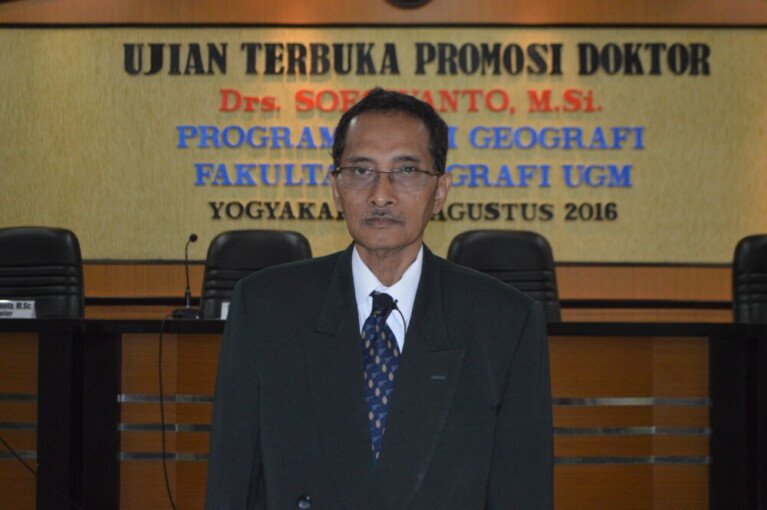
Lamongan regency in East Java lies in the watershed area of Bengawan Solo river. Lying lower than the rest, this area is always flooded every rainy season. The affected areas consist of Bengawan Jero or Bonorowo area that comprises 8 districts and covers up to 50.17 percent of Lamongan total areas.
Drs.Soegiyanto, M.Si., lecturer in Geography Education from Surabaya State University, said the Bonorowo area in the rainy season is swampy, but in the dry season the area is drained. Every year the area experiences drowning in a random duration.
“The eight districts are always drenched due the runoff from the Bengawan Solo river. The frequence and duration of drench are longer than those of other areas,” he said on Friday (19/8) in his doctoral promotion at Faculty of Geography UGM.
Such condition affects the livelihoods of the local people which is mostly in agriculture. They adapt to their surroundings by regulating planting schedules, rearing fish, shrimps, renting boats, etc.
“During the rainy season or flooding, the local people would change their source of earnings from agriculture to fish rearing or others according to their skills,” he said.
Soegiyanto mentioned that the level of education affects their choice of livelihoods. Those with lowest education will work in non-agriculture areas such as shrimp pond whilst asking their wives to do random jobs. Some would wait for assistance and ask their wives to work instead. People with better education tend to work in non-agricultural areas.
Other results showed that the choice of strategy based on characteristics of swamp area is to work in non-agriculture, reduce expenses, wait for financial assistance from their adult children, ask their wives to work, or draw loans. The most prefered is to work in non-agricultural areas such as rearing fish, shrimp, or cattle.


